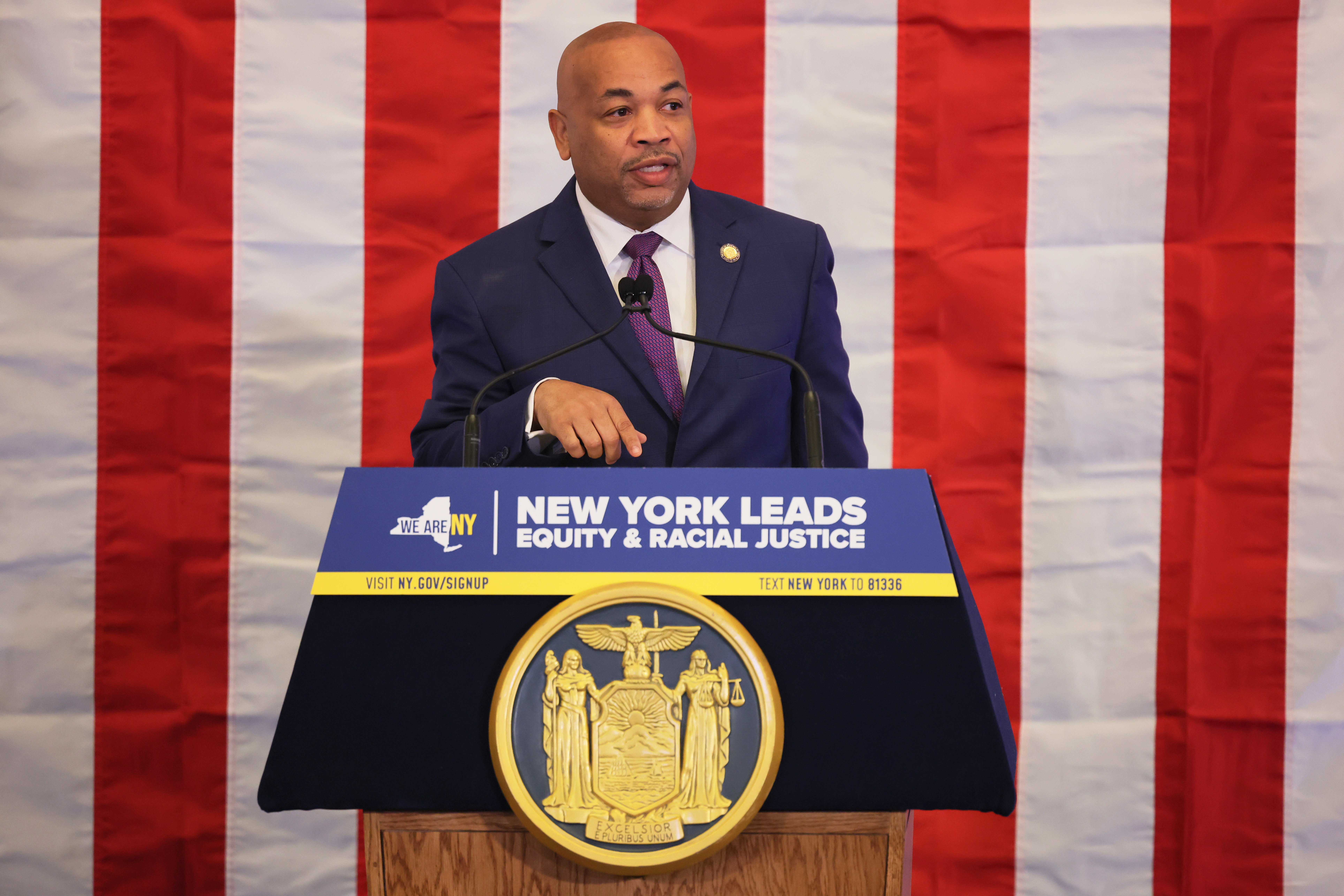
New York’s Democratic-controlled state Legislature approved a new congressional map Wednesday, just two days after rejecting the boundaries proposed by the state’s bipartisan Independent Redistricting Commission.
To the surprise of many observers, however, Empire State Democrats ratified a map with only modest changes from either the commission’s proposal or the state’s current boundaries.
The new map provides a small boost to Democratic incumbents and candidates in competitive districts on Long Island, in the central Hudson Valley, and in central New York, rather than much larger advantages for the party in all of its competitive U.S. House seats.
The map was the product of negotiation between the state Senate, which wanted further-reaching changes, and the state Assembly and national Democrats, who supported smaller changes, according to multiple people familiar with deliberations.
Going small has its own upsides for Democrats. By pursuing fewer changes, Democrats hoped to avoid the legal and political hurdles that they encountered after a more ambitious redistricting effort in 2022 was struck down in court, plunging the state into a chaos that many believe hurt the party in the midterm elections that year.
“We had to come up with something that would withstand scrutiny under the legal strictures in the Constitution,” said state Senate Deputy Majority Leader Michael Gianaris (D). “Nobody wanted to get tied up in litigation.”
Sure enough, several Republican state lawmakers found the map acceptable enough to support during Wednesday’s vote.
Under the guidance of U.S. House Democratic Leader Hakeem Jeffries, a Brooklynite aiming to become speaker, Democrats hope to take back three seats that Republicans flipped in 2022, while holding on to hard-fought gains in three other swing seats. Jeffries apparently does not see the new map as an obstacle to that goal.
In a statement Wednesday, Jeffries praised the “bipartisan congressional map that more meaningfully delivers the type of fair representation that the people of New York State deserve.”
New York’s Constitution prohibits the state Legislature from drawing district lines for partisan purposes. But changes made with legitimate concerns in mind, such as geographic contiguity and the preservation of “communities of interest,” are permitted to have ancillary partisan benefits.
Jeffries cited those concerns in his statement. “This map reunites several communities of interest, reduces the number of counties, towns and villages that are split and promotes compact congressional districts,” he said.
New York Gov. Kathy Hochul (D) is expected to sign the map into law in the coming days.
Here are the key changes in the new map, relative to the one that was in effect during the 2022 midterm elections:
- New York’s 3rd Congressional District, where U.S. Rep. Tom Suozzi (D) just won a special election, goes from a district that President Joe Biden carried by 8 percentage points to one that he carried by 11 points.
- New York’s 22nd, which includes the city of Syracuse, goes from a Biden plus-8 to a Biden plus-11 seat. Democrats hope to unseat first-term Rep. Brandon Williams (R).
- New York’s 19th, a vast stretch of the upper Hudson Valley and the Southern Tier, holds steady as a Biden plus-5, undoing the Independent Redistricting Commission’s proposal to make the seat’s partisan breakdown more even. Democrats hope to unseat first-term Rep. Marc Molinaro (R).
It came as a particular surprise to observers that the Legislature chose not to tinker with New York’s 17th, where former Rep. Mondaire Jones (D) is running to reclaim his old seat. Biden carried the lower Hudson Valley seat by 10 points in 2020, but Rep. Mike Lawler (R) is considered a strong incumbent.
Significant changes to New York’s 17th would have necessitated land swaps that might have impacted the heated Democratic primary in New York’s neighboring 16th, where left-wing Rep. Jamaal Bowman (D) is fending off a challenge from Westchester County Executive George Latimer (D). Bowman picked up the predominantly Black Bronx neighborhood of Co-Op City, while losing an equivalent slice of the Wakefield neighborhood. Co-Op City’s concentration of older, high-propensity voters is expected to provide Bowman a modest advantage against Latimer, relative to the previous map.
Disclaimer: The copyright of this article belongs to the original author. Reposting this article is solely for the purpose of information dissemination and does not constitute any investment advice. If there is any infringement, please contact us immediately. We will make corrections or deletions as necessary. Thank you.
